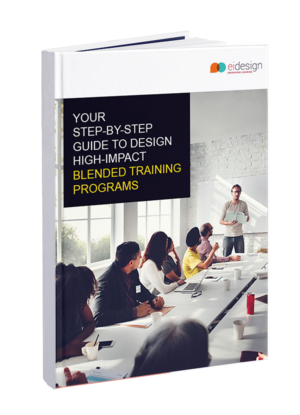There certainly has been an increase in large-scale conversions of ILT materials to online learning.
While a lot of this is triggered by challenges on training budgets, we believe it also provides an opportunity to relook at the traditional format and enhance the training delivery.
We have created this eBook as a step-by-step guide that you can use as you embark on the conversion of your ILT program to a Blended Training program. These inputs will certainly help you in creating a high-impact Blended Training program. More specifically, you can use the tips and best practices to optimize your current Blended Training programs.
eBook Overview
- Section 1 – Basics
This section outlines the definition of a Blended Training approach. It then moves on to examining the reasons or triggers that are leading to acceleration in adoption of this conversion.
- Section 2 – Benefits
This section builds up from the previous section to detail out the benefits that organizations accrue if they adopt a Blended Training approach over a traditional ILT approach. It examines these benefits from two perspectives – what do the learners gain and what do the organizations gain in this exercise. It also looks at a related aspect of how learners respond when you transition from a predominantly ILT approach to Blended Training approach.
- Section 3 – Deployment
Having gained the knowledge on the basic aspects of Blended Training adoption, this section builds further to address the crucial aspects on how the Blended Training can be delivered. It outlines the models that you can use to offer Blended Training. More significantly, it provides cues on how to determine what degree of blending would be most effective.
- Section 4 – Tips and Best Practices
After gaining an understanding on the deployment, this section outlines the best practices that can be used to increase the impact of Blended Training. Additionally, it provides several tips that you can use to create highly effective Blended Training programs.
- Section 5 – Blended Training in Action
The eBook wraps up with this section that showcases two examples on how you can enhance the impact of ILT by adopting a Blended Training approach.
